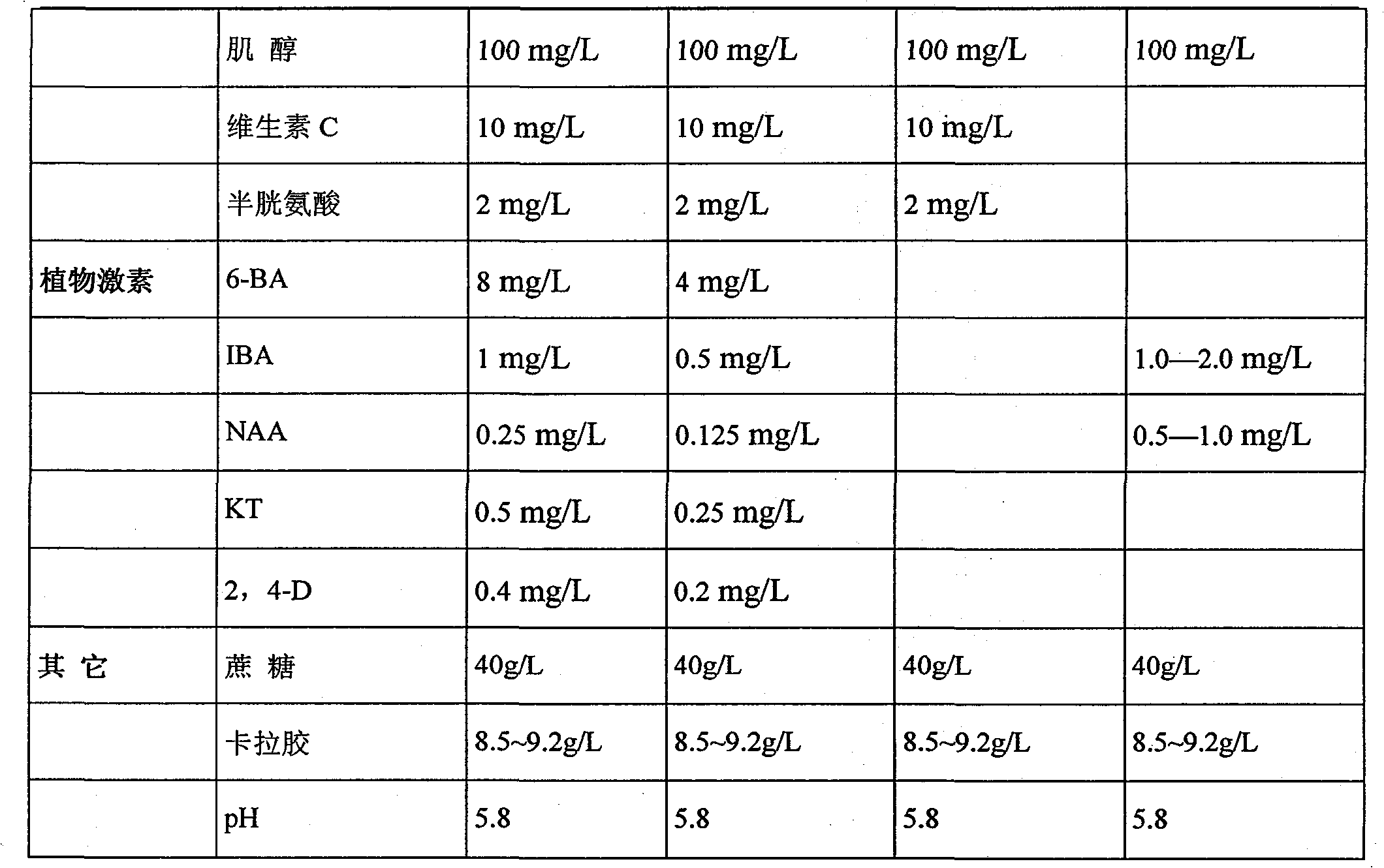Calamus simplicifolius clone tissue culture and fast propagation method
A technology of tissue culture rapid propagation and clonal lines, which is applied in the fields of soilless culture, horticultural methods, botanical equipment and methods, etc., can solve the problem that the genetic basis of propagation materials cannot be completely controlled, and the research on tissue culture technology of palmaceae plants is difficult and impossible. Propagate clonal seedlings and other issues to achieve strong market competitiveness, fast seedling propagation speed, and good economic benefits
- Summary
- Abstract
- Description
- Claims
- Application Information
AI Technical Summary
Problems solved by technology
Method used
Image
Examples
Embodiment Construction
[0035] The present invention will be described in detail below in conjunction with specific embodiments.
[0036] The present invention relates to the tissue culture rapid propagation of the vine vine clone, and the specific method can be carried out as follows:
[0037] 1) Collection of sprouted tiller explants
[0038] The key to collecting the tillering bud explants is to prevent the external injury of the bud and the shock of the bud core. If the sprouts have wounds, the soil can easily enter the sprouts and cannot be sterilized successfully. After the bud heart is shattered, the wound will brown rapidly, which will easily lead to the death of the bud heart. Therefore, the sprouts cannot be dug away from the mother plant with a hoe, nor can they be chopped with a knife. The sprouts must be sawed off from the mother plant with a saw. Germinating tiller buds are in the soil, so it is necessary to avoid collecting them in rainy days and within 1 to 3 days after rain. Othe...
PUM
| Property | Measurement | Unit |
|---|---|---|
| height | aaaaa | aaaaa |
| height | aaaaa | aaaaa |
| concentration | aaaaa | aaaaa |
Abstract
Description
Claims
Application Information
 Login to View More
Login to View More - R&D
- Intellectual Property
- Life Sciences
- Materials
- Tech Scout
- Unparalleled Data Quality
- Higher Quality Content
- 60% Fewer Hallucinations
Browse by: Latest US Patents, China's latest patents, Technical Efficacy Thesaurus, Application Domain, Technology Topic, Popular Technical Reports.
© 2025 PatSnap. All rights reserved.Legal|Privacy policy|Modern Slavery Act Transparency Statement|Sitemap|About US| Contact US: help@patsnap.com


